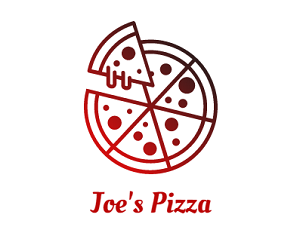Spaghetti Near You
- Pizza La Italiana
 Closed4.6
Closed4.6 - Hacienda Heights Pizza Co
 Closed$7.65 Delivery4.7
Closed$7.65 Delivery4.7 - Omar's Pizza
 Closed$5.40 Delivery4.7
Closed$5.40 Delivery4.7 - Marco Polo Pizza
 Closed$6.00 Delivery4.9
Closed$6.00 Delivery4.9 - L.A Pizza & Mediterranean Kitchen
 Closed$4.95 Delivery4.9
Closed$4.95 Delivery4.9
- Pizza La Italiana
 Closed4.6
Closed4.6 - Hacienda Heights Pizza Co
 Closed$7.65 Delivery4.7
Closed$7.65 Delivery4.7 - Omar's Pizza
 Closed$5.40 Delivery4.7
Closed$5.40 Delivery4.7 - Marco Polo Pizza
 Closed$6.00 Delivery4.9
Closed$6.00 Delivery4.9 - L.A Pizza & Mediterranean Kitchen
 Closed$4.95 Delivery4.9
Closed$4.95 Delivery4.9 - Big Mama's & Papa's Pizzeria
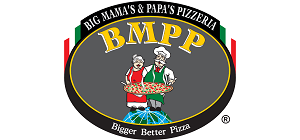 ClosedFree Delivery4.6
ClosedFree Delivery4.6 - Tomato Pie Pizza Joint
 Closed$2.99 Delivery4.8
Closed$2.99 Delivery4.8 - Red Devil Pizza
 Closed$3.00 Delivery4.8
Closed$3.00 Delivery4.8 - Papa Pizza Pie (Glendora)
 Closed$4.50 - $5.00 Delivery4.9
Closed$4.50 - $5.00 Delivery4.9 - Cafe Corleone Italian RestaurantClosed$5.00 Delivery4.7
- Big Mama's & Papa's Pizzeria
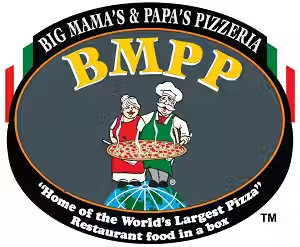 Closed$3.99 Delivery5.0
Closed$3.99 Delivery5.0 - Uncle Reds Pizzeria
 Closed$3.95 Delivery4.8
Closed$3.95 Delivery4.8 - Tomato Pie Pizza Joint
 Closed$4.50 Delivery4.9
Closed$4.50 Delivery4.9 - El Morfi Grill
 Closed$4.40 Delivery4.7
Closed$4.40 Delivery4.7 - Straw Hat Pizza
 Closed$3.50 Delivery4.5
Closed$3.50 Delivery4.5
Spaghetti
- D'Amore's Pizza
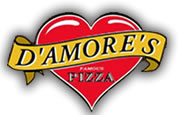 Open Now$3.00 - $10.00 Delivery4.9
Open Now$3.00 - $10.00 Delivery4.9 - Barraco's Pizza
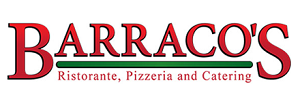 Open Now$5.50 - $16.00 Delivery5.0
Open Now$5.50 - $16.00 Delivery5.0 - Mug's Pizza & Grill
 Open Now$5.00 Delivery4.9
Open Now$5.00 Delivery4.9 - King of Pizza CityOpen Now$3.00 Delivery4.5
- King's Pizza
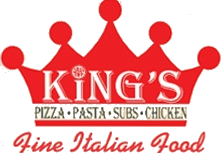 Open Now$2.00 Delivery4.7
Open Now$2.00 Delivery4.7
- D'Amore's Pizza
 Open Now$3.00 - $10.00 Delivery4.9
Open Now$3.00 - $10.00 Delivery4.9 - Barraco's Pizza
 Open Now$5.50 - $16.00 Delivery5.0
Open Now$5.50 - $16.00 Delivery5.0 - Mug's Pizza & Grill
 Open Now$5.00 Delivery4.9
Open Now$5.00 Delivery4.9 - King of Pizza CityOpen Now$3.00 Delivery4.5
- King's Pizza
 Open Now$2.00 Delivery4.7
Open Now$2.00 Delivery4.7 - Uncle Rocco's New York Pizza
 Open Now$3.95 Delivery4.9
Open Now$3.95 Delivery4.9 - Marko's PizzaOpen Now$2.50 Delivery4.6
- Pizza House
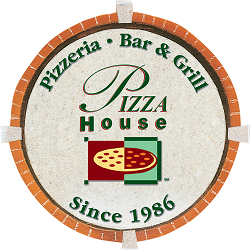 Open Now$6.75 Delivery4.5
Open Now$6.75 Delivery4.5 - Bobby's PizzeriaOpen Now$5.65 Delivery4.6
- Taqueria El Ranchito
 Open Now$3.99 Delivery4.0
Open Now$3.99 Delivery4.0 - Rita's Pizza & Chicken
 Open Now$4.99 Delivery4.6
Open Now$4.99 Delivery4.6 - You Are a Pizza WorkOpen Now$5.99 Delivery
- The Calzone FaktoryOpen Now$4.95 Delivery
- The Wing FaktoryOpen Now$5.99 Delivery
- Radad GrillOpen Now$6.00 Delivery
Best Spaghetti in Baltimore
- Marko's PizzaOpen Now$2.50 Delivery4.6
- Tov Pizza
 Closed$5.00 Delivery4.6
Closed$5.00 Delivery4.6 - Pizza Bravo Plus
 Closed$2.50 Delivery4.8
Closed$2.50 Delivery4.8 - Arlon's Pizzeria Carry Out & Delivery
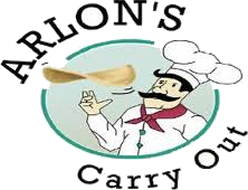 Closed$2.99 Delivery5.0
Closed$2.99 Delivery5.0 - The Hopkins Spot
 Closed$2.50 Delivery4.3
Closed$2.50 Delivery4.3
- Marko's PizzaOpen Now$2.50 Delivery4.6
- Tov Pizza
 Closed$5.00 Delivery4.6
Closed$5.00 Delivery4.6 - Pizza Bravo Plus
 Closed$2.50 Delivery4.8
Closed$2.50 Delivery4.8 - Arlon's Pizzeria Carry Out & Delivery
 Closed$2.99 Delivery5.0
Closed$2.99 Delivery5.0 - The Hopkins Spot
 Closed$2.50 Delivery4.3
Closed$2.50 Delivery4.3 - American Wings & Pizza
 Closed$2.50 Delivery4.6
Closed$2.50 Delivery4.6 - A1 Pizza & Subs
 Closed$3.75 Delivery4.9
Closed$3.75 Delivery4.9 - York Pizza, Subs & Wings
 Closed$2.50 Delivery4.8
Closed$2.50 Delivery4.8 - Philadelphia Style Pizza & Subs
 Closed$2.99 - $3.99 Delivery4.9
Closed$2.99 - $3.99 Delivery4.9 - Pizza Boli's
 Closed$1.99 Delivery4.9
Closed$1.99 Delivery4.9 - Pizza Boli's
 Closed$3.00 Delivery4.5
Closed$3.00 Delivery4.5 - Dash Seafood & Chicken
 Closed$4.00 - $7.00 Delivery4.8
Closed$4.00 - $7.00 Delivery4.8 - Papa Palace Pizza
 Closed$2.75 Delivery4.5
Closed$2.75 Delivery4.5 - Pizza Boli's Falls Road
 Closed$5.00 Delivery4.9
Closed$5.00 Delivery4.9 - Pizza Boli's
 Closed$2.50 Delivery4.6
Closed$2.50 Delivery4.6
Best Spaghetti in Boston
- South End Pizza & Grill
 Closed$3.00 Delivery4.9
Closed$3.00 Delivery4.9 - Primo's Pizza Restaurant
 Closed$4.90 Delivery4.8
Closed$4.90 Delivery4.8
- South End Pizza & Grill
 Closed$3.00 Delivery4.9
Closed$3.00 Delivery4.9 - Primo's Pizza Restaurant
 Closed$4.90 Delivery4.8
Closed$4.90 Delivery4.8
Best Spaghetti in Chicago
- Taqueria El Ranchito
 Open Now$3.99 Delivery4.0
Open Now$3.99 Delivery4.0 - Cochiaro's Pizza
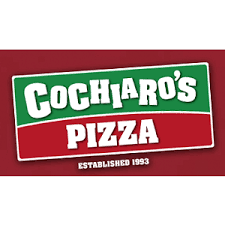 Closed$4.50 Delivery4.8
Closed$4.50 Delivery4.8 - Festa Pizza
 Closed$4.50 Delivery4.8
Closed$4.50 Delivery4.8 - The Art of Pizza - 3033 N ASHLAND LOCATION
 Closed$4.95 Delivery5.0
Closed$4.95 Delivery5.0 - Coluta's PizzaClosed$4.00 Delivery4.9
- Taqueria El Ranchito
 Open Now$3.99 Delivery4.0
Open Now$3.99 Delivery4.0 - Cochiaro's Pizza
 Closed$4.50 Delivery4.8
Closed$4.50 Delivery4.8 - Festa Pizza
 Closed$4.50 Delivery4.8
Closed$4.50 Delivery4.8 - The Art of Pizza - 3033 N ASHLAND LOCATION
 Closed$4.95 Delivery5.0
Closed$4.95 Delivery5.0 - Coluta's PizzaClosed$4.00 Delivery4.9
- Pizzeria SerioClosed$5.00 Delivery5.0
- Falco's Pizza Chicago
.jpg?auto=format&fit=max&q=10) Closed$4.99 Delivery4.8
Closed$4.99 Delivery4.8 - Mr V's Pizza
 Closed$4.00 Delivery4.8
Closed$4.00 Delivery4.8 - Pete's Pizza
 Closed$5.95 Delivery4.9
Closed$5.95 Delivery4.9 - Lonnie's Pizzeria
 Closed$4.00 Delivery5.0
Closed$4.00 Delivery5.0 - Positano's PizzaClosed$5.00 Delivery4.9
- Chuck's Pizza
.png?auto=format&fit=max&q=10) Closed$4.95 Delivery4.8
Closed$4.95 Delivery4.8 - Vini's Pizza
 Closed$4.50 - $12.00 Delivery4.9
Closed$4.50 - $12.00 Delivery4.9 - Chikago Pizza
 Closed$4.50 Delivery4.9
Closed$4.50 Delivery4.9 - Cochiaro's Pizza
 Closed$4.50 Delivery4.9
Closed$4.50 Delivery4.9
Best Spaghetti in Houston
- Texas Halal Pizza & Restaurant
.png?auto=format&fit=max&q=10) Closed$4.00 - $8.00 Delivery
Closed$4.00 - $8.00 Delivery - Mr. Gatti's Pizza
 Closed$5.00 Delivery4.7
Closed$5.00 Delivery4.7 - Habanero's Grill & Bar
.png?auto=format&fit=max&q=10) Closed$4.95 Delivery5.0
Closed$4.95 Delivery5.0 - Texas PizzaClosed$4.95 Delivery4.5
- Jenny's Pizza & Pasta
 Closed$6.00 Delivery4.8
Closed$6.00 Delivery4.8
- Texas Halal Pizza & Restaurant
.png?auto=format&fit=max&q=10) Closed$4.00 - $8.00 Delivery
Closed$4.00 - $8.00 Delivery - Mr. Gatti's Pizza
 Closed$5.00 Delivery4.7
Closed$5.00 Delivery4.7 - Habanero's Grill & Bar
.png?auto=format&fit=max&q=10) Closed$4.95 Delivery5.0
Closed$4.95 Delivery5.0 - Texas PizzaClosed$4.95 Delivery4.5
- Jenny's Pizza & Pasta
 Closed$6.00 Delivery4.8
Closed$6.00 Delivery4.8 - Two Guys Pizzeria
.png?auto=format&fit=max&q=10) Closed$2.99 Delivery4.9
Closed$2.99 Delivery4.9 - Dan's Pizza ''In The Mont''
 Closed$4.00 - $10.00 Delivery4.9
Closed$4.00 - $10.00 Delivery4.9 - King Pizza
 Closed$3.00 Delivery4.6
Closed$3.00 Delivery4.6
Best Spaghetti in Las Vegas
- ROCCOS NY PIZZAClosed$5.00 Delivery4.7
- Santina's NY PizzeriaClosed$4.95 Delivery4.4
- Giuseppe's Bar & Grille Las Vegas
.png?auto=format&fit=max&q=10) Closed$4.95 Delivery4.8
Closed$4.95 Delivery4.8 - Boca Do Brasil
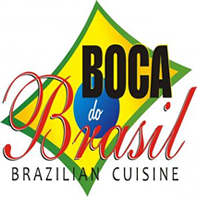 Closed$6.90 Delivery4.9
Closed$6.90 Delivery4.9 - Manhattan Pizza IIClosed$4.95 Delivery4.8
- ROCCOS NY PIZZAClosed$5.00 Delivery4.7
- Santina's NY PizzeriaClosed$4.95 Delivery4.4
- Giuseppe's Bar & Grille Las Vegas
.png?auto=format&fit=max&q=10) Closed$4.95 Delivery4.8
Closed$4.95 Delivery4.8 - Boca Do Brasil
 Closed$6.90 Delivery4.9
Closed$6.90 Delivery4.9 - Manhattan Pizza IIClosed$4.95 Delivery4.8
- Piccolo PizzaClosedFree Delivery4.3
- Joey's PizzaClosed$5.00 Delivery4.6
Best Spaghetti in New York
- Exclusive Pizza
 ClosedFree Delivery4.9
ClosedFree Delivery4.9 - Supreme Eats Pizza And PastaClosedFree Delivery4.7
- Traditas Pizza
 Closed$7.65 Delivery4.9
Closed$7.65 Delivery4.9 - Mama Tina's PizzeriaClosedFree Delivery4.6
- Ledo PizzaClosed$5.00 Delivery4.7
- Exclusive Pizza
 ClosedFree Delivery4.9
ClosedFree Delivery4.9 - Supreme Eats Pizza And PastaClosedFree Delivery4.7
- Traditas Pizza
 Closed$7.65 Delivery4.9
Closed$7.65 Delivery4.9 - Mama Tina's PizzeriaClosedFree Delivery4.6
- Ledo PizzaClosed$5.00 Delivery4.7
- Cheesy Pizza
 Closed$3.00 Delivery4.8
Closed$3.00 Delivery4.8 - Mediterraneo
 Closed$1.00 Delivery5.0
Closed$1.00 Delivery5.0 - Traditas Pizza
 Closed$7.65 Delivery4.9
Closed$7.65 Delivery4.9 - Prova Pizza Bar - GCTClosed$5.40 Delivery4.7
Best Spaghetti in Philadelphia
- Ernie's Pizza & Restaurant
 Closed$3.00 Delivery4.8
Closed$3.00 Delivery4.8 - Baby Boss Pizza & Grill
 Closed$2.00 Delivery4.9
Closed$2.00 Delivery4.9 - 3 Brothers Pizza & Pasta
 Closed$3.00 Delivery4.8
Closed$3.00 Delivery4.8 - Dolce Carini Pizza
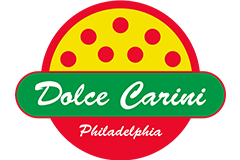 Closed$2.99 Delivery4.8
Closed$2.99 Delivery4.8 - Bentoulis PizzaClosed$2.00 Delivery4.7
- Ernie's Pizza & Restaurant
 Closed$3.00 Delivery4.8
Closed$3.00 Delivery4.8 - Baby Boss Pizza & Grill
 Closed$2.00 Delivery4.9
Closed$2.00 Delivery4.9 - 3 Brothers Pizza & Pasta
 Closed$3.00 Delivery4.8
Closed$3.00 Delivery4.8 - Dolce Carini Pizza
 Closed$2.99 Delivery4.8
Closed$2.99 Delivery4.8 - Bentoulis PizzaClosed$2.00 Delivery4.7
- Tony's Pizzeria
 Closed$1.50 Delivery4.9
Closed$1.50 Delivery4.9 - Crispy PizzaClosed$3.00 Delivery4.9
- Big Al's Italiano
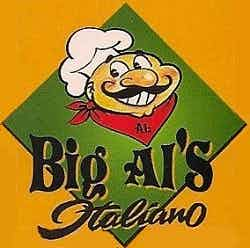 Closed$2.25 Delivery4.7
Closed$2.25 Delivery4.7 - Domenic's Pizza
 Closed$3.00 - $4.00 Delivery4.7
Closed$3.00 - $4.00 Delivery4.7 - La Casa Pizza
 Closed$4.00 Delivery4.8
Closed$4.00 Delivery4.8 - Golden Crust Pizza III
 Closed$3.00 Delivery4.8
Closed$3.00 Delivery4.8 - Stacy's Pizza
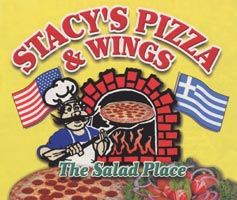 Closed$3.50 - $5.00 Delivery4.6
Closed$3.50 - $5.00 Delivery4.6 - Wacky Zaki'sClosed$2.62 Delivery4.5
- Pizza Point
 Closed$3.99 Delivery4.9
Closed$3.99 Delivery4.9 - Marcello's Pizza Grill PhillyClosed$3.00 Delivery4.7
Newest Spaghetti Pizza Places on Slice
- Radad GrillOpen Now$6.00 Delivery
- Pizza & GrillOpen Now$6.00 Delivery
- Amigos Pizzeria And Mexican RestaurantClosedFree Delivery
- Anna's PizzaClosed$4.95 Delivery4.5
- Spassos PizzeriaClosedFree Delivery4.8
- Radad GrillOpen Now$6.00 Delivery
- Pizza & GrillOpen Now$6.00 Delivery
- Amigos Pizzeria And Mexican RestaurantClosedFree Delivery
- Anna's PizzaClosed$4.95 Delivery4.5
- Spassos PizzeriaClosedFree Delivery4.8
- Dominick's PizzaClosed$3.00 Delivery4.8
- Red Bank Pizza & CafeClosed$4.99 Delivery5.0
- Sarabella PizzaClosedFree Delivery5.0
- Royal Pizza PointClosed$4.99 Delivery
- Dan's Pizza ''In The Mont''
 Closed$4.00 - $10.00 Delivery4.9
Closed$4.00 - $10.00 Delivery4.9 - Zetina's - EvilleClosed$1.00 - $3.00 Delivery5.0
- Joes Italian Restaurant & PizzaClosed$4.95 Delivery4.3
- New ItaliaClosed$4.50 - $7.00 Delivery4.8
- New London PizzaClosed$3.00 Delivery4.5
- Rosie's Pizzeria
 Closed$2.00 Delivery5.0
Closed$2.00 Delivery5.0
What Is Spaghetti?
There's really no need for a special introduction to spaghetti. If you're someone who loves pasta, you already know how delicious and versatile this dish is.
Still, there is a lot of cool information about the history and preparation of spaghetti. And even if this pasta is a regular part of your diet, perhaps you've never taken the time to learn more about it.
Well, no worries, we at Slice are here to tell you everything about it, as well as where to find some near you.
First things first, what exactly is spaghetti? It is a kind of pasta that is long and thin which makes it look like strings. The main ingredients are wheat flour and water.
Spaghetti is synonymous with Italian cuisine. In Italy, they usually make it with semolina which is a milled durum wheat.
As for its length, it is typically between 10 and 12 inches long. And it's the perfect pasta to combine with a multitude of sauces.
Moreover, the preparation method includes cooking fresh or dry spaghetti in boiled water and then draining it. In general, the pasta is completely cooked but it can also be done softer.
Also, the name comes from the word "spago" which means "thin string."
When was spaghetti invented?
We can't look at the history of spaghetti without looking at the history of pasta in general.
The first mentions of pasta-like food had a lot to do with lasagna. Though of course, those versions were quite different than the modern-day lasagna.
Notable references include the dish "lagana" which was made of fried sheets of dough. Authors Horace and Athenaeus wrote about it in the 1st and 2nd century AD respectively. And in the 5th century AD, there was even a recipe that included layers of dough stuffed with meat.
However, those dishes cannot officially be considered pasta due to the different cooking processes.
Another popular belief is that Marco Polo was the one to bring pasta over from China. Apparently, he had described a dish resembling "lagana."
Still, others say that pasta was introduced by the Arabs when they reigned Sicily during the 9th century. Or that it made it to Italy via the Mediterranean trades prominent throughout the Middle Ages.
But what's clear is that written records of various pasta dishes started to appear in the 13th century. And it was only with increased frequency. A significant reference includes the Decameron from the 14th century.
Later on, people would bring dried pasta on their ships because it was easy to store. And that's how pasta was spread all across the world.
So, how did spaghetti become so popular? Well, as technology improved, it could be mass-produced in actual factories. And so, spaghetti flooded the Italian market in the 1800s.
Towards the end of the same century, spaghetti was served in American restaurants as well.
What are some interesting facts about spaghetti?
Numbers don't lie. And they have a lot to say about spaghetti. First, let's take a look at some statistics.
The largest bowl of spaghetti, or rather a pool, was made back in 2010. It's when popular chain Buca di Beppo cooked 13,780 lb of this pasta - enough to fill an entire swimming pool! This took place in the O.C. in California.
Also, the amount of spaghetti sold in America in 2000 alone could circle the planet 9 times.
On that note, the dish saw a huge rise in yearly consumption after World War II. In Italy, it went from 31 lb to 62 lb per person. In fact, in 1955, Italy could produce 3 million tons of spaghetti.
There's even a holiday to celebrate spaghetti. It's on January 4th.
The popular term "Spaghetti Western" came from the fact that the majority of European Western movies were made by Italians.
In 1957, BBC used spaghetti for an April Fool's joke. They went as far as to display a Swiss family growing it on trees. This successfully tricked some people because the British weren't that familiar with spaghetti yet.
The term "mom's spaghetti" was part of Eminem's hit song Lose Yourself. It garnered enough attention over the years that Eminem decided to open a restaurant of the same name in Detroit.
What are some different spaghetti versions?
As mentioned earlier, this is a very versatile dish. And here are some popular variations:
Spaghetti Bolognese - This one comes with a sauce consisting of tomatoes, minced meat, garlic, and more. Spaghetti and meatballs - As the name implies, this version features meatballs, but also tomato sauce. It was created by Italians that immigrated to America. Spaghetti Carbonara - The ingredients for this one include pasta, hard cheese, cured pork, and others. Spaghetti aglio e olio - Popular in Naples, the name means - with garlic and oil. Spaghetti alle vongole - This one combines pasta with clams.
How many calories are in a plate of spaghetti?
A spaghetti serving of 280g contains about 420 calories. This includes 1.7g of total fat or 2% of the daily value. This is based on a 2000-calorie diet.
In addition, there are 84g of total carbohydrates (31%), 14.8g of protein, as well as 13.4mg of sodium.
What's more, we have 21% of iron, 5% of potassium, and 2% of calcium.
Where can I find spaghetti near me?
If you're looking for some restaurant recommendations to get this delicious pasta, no worries, we got you covered.
For those of you in Chicago, we have to mention Villa Palermo. This amazing place is located on W Devon Ave. They also offer takeout and delivery, and you even save 5% on any online order via Slice.
As for those of you in Las Vegas, we strongly recommend Grinders Italian Guys Pizza. You can find them on S Rainbow Blvd. They're open 7 days a week, offer pickup and delivery, and you get 5% off on all orders on Slice.
Browse More Dishes
EVEN MORE DISHES NEAR YOU
Veal Piccata
•Macaroni and Cheese
•Tartufo
•Patty Melt
•Lava Cake
•Ice Cream
•Cavatelli
•Tuna Salad Sandwich
•Chocolate Milk
•Sausage Parmigiana Sandwich
•Italian Salad
•Pesto Chicken Pizza
•Chocolate Pudding
•Strawberry Cheesecake
•Tuna Melt Panini
•Chicken Shawarma
•Iced Latte
•Italian Sandwich
•Chicken Salad Sub
•Chicken Parmigiana Panini
•Turkey Club Wrap
•Tiramisu
•Chicken Piccata
•Lasagna Catering
•Roast Beef Wrap
•Chicken Cheesesteak
•Tomato Soup
•Chicken Cheesesteak Sandwich
•Mussels
•Chicken Caesar Wrap
•Veggie Wrap
•Boneless Wings
•





.jfif?auto=format&fit=max&q=10)


